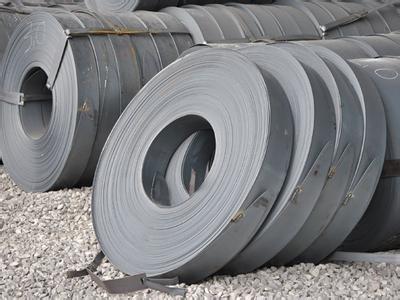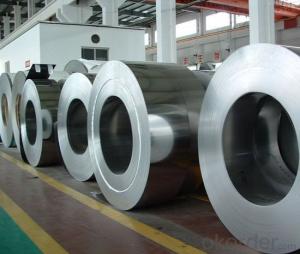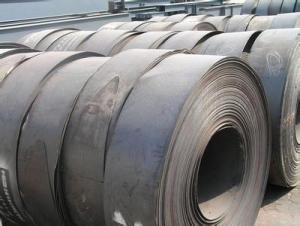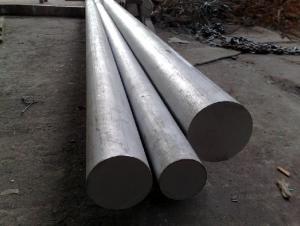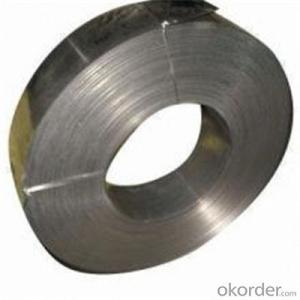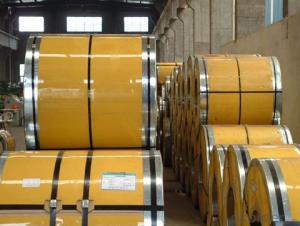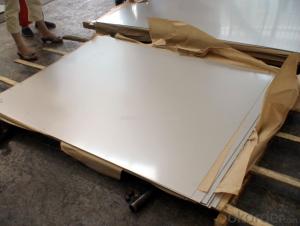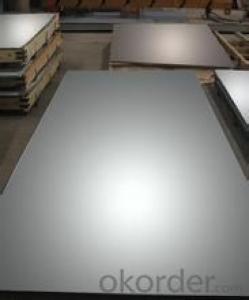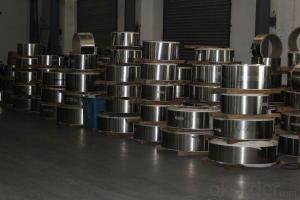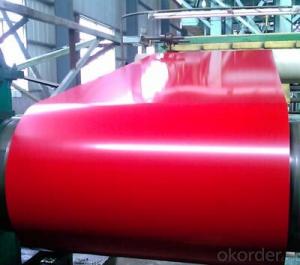High grade hot- rolled strip
- Loading Port:
- China Main Port
- Payment Terms:
- TT OR LC
- Min Order Qty:
- -
- Supply Capability:
- -
OKorder Service Pledge
OKorder Financial Service
You Might Also Like
Hot rolled strip, the English name of Hot - rolled strip, also known as Hot rolled steel belt, commonly known as is a Hot plate. Hot rolled strip width less than or equal to 600 mm, the thickness of 0.35-200 - mm steel plate and the thickness of 1.2-25 mm steel belt.
The relevant classification
The editor
Hot rolled steel plate is divided into structural steel, mild steel, welding steel, then according to the steel of various steel products to find what you need to check the specific density and composition of the steel. Hot rolled steel plate hardness is low, easy processing, good extensibility. Hot rolled strip steel products including steel belt (volume) and has its shear of steel plate. Steel belt (volume) can be divided into straight hair volume and finishing (volume classification, formation and slitting roll).
Hot rolled steel plate strength is relatively low, the surface quality almost (oxidation, low roughness), but the plasticity is good, generally for the medium plate, manufacture, high strength, high hardness, high surface finish, generally for sheet, can be used as a drawing board.
2 the difference between
The editor
Cold rolled steel sheet due to a certain degree of strain hardening, toughness is low, but can reach better showed, used for cold bending spring pieces and parts, at the same time due to the yield point is close to the tensile strength, so no foresight to danger, in use process in the load exceeds allowable load are prone to accidents.
1) cold plate using cold processing surface without scale, good quality. Hot rolled steel plate, surface of oxide skin are processed using the hot rolled plate thickness with the poor.
2) hot rolled steel toughness and surface smoothness is poor, the price is low, and the extension of manufacture and resilient, but the price is more expensive.
3) rolling is divided into cold rolled and hot rolled steel plate, distinguish between point for recrystallization temperature.
4) cold rolling: generally used in the production of strip cold rolling, the rolling speed is higher. The temperature of the hot rolled steel plate, the temperature of the hot rolled and forged close.
5) don't plating surface of hot rolled steel plate into dark brown, not plated cold plate surface is gray, from the smooth degree of surface after plating will distinguish, lengzha board smoothness is higher than that of hot rolled steel plate.
Data reference
标准及牌号 | 国家标准 | 相当国外标准 | 作用与用途 | ||
材料类别 | 执行标准 | 牌号 | 标准号 | 牌号 | 适应于制造冷成型加工的零件 |
低碳钢卷板 | Q/BQB302 | SPHC | JISG3131 | SPHC | |
SPHD | SPHD | ||||
SPHE | SPHE | ||||
SAE1006/SAE1008 | SAE1006/SAE1008 | ||||
XG180IF/200IF | XG180IF/200IF | ||||
一般结构用钢 | GB/T912-1989 | Q195 | JISG3101 | SS330 | 用于建筑、桥梁、船舶、车辆等一般构建 |
Q235B | SS400 | ||||
SS400 | SS490 | ||||
ASTMA36 | SS540 |
- Q: What is the price of steel strips?
- Steel strip prices can fluctuate based on multiple factors, including the particular steel type, strip thickness and width, purchase quantity, and prevailing market conditions. To obtain an accurate and current price estimate for steel strips, it is advisable to seek guidance from steel suppliers or manufacturers.
- Q: How are steel strips processed for deburring?
- Various techniques are employed to deburr steel strips, depending on specific requirements. One commonly utilized approach involves mechanical deburring, where the strips are passed through specialized machines equipped with rotating brushes or abrasive wheels. These brushes or wheels effectively eliminate burrs by rubbing against the strip's surface, resulting in the smoothing out of any rough edges or protrusions. Another technique, known as vibratory deburring, entails placing the steel strips into a vibratory bowl or tub alongside abrasive media. Through consistent friction caused by vibration, the media rubs against the strips, effectively removing burrs. This method proves highly useful for deburring intricate or delicate shapes. Chemical deburring presents an alternative option, whereby the steel strips are immersed in a chemical bath containing a deburring agent. The agent dissolves the burrs, resulting in smooth and even strip surfaces. This method is commonly employed for deburring hard-to-reach areas or parts with intricate geometries. Additionally, advanced laser deburring employs laser technology to accurately remove burrs from steel strips. The laser beam is directed at the burrs, melting or vaporizing them, thus creating a clean and burr-free surface. This method is exceptionally precise and efficient, making it suitable for high-precision applications. Ultimately, the choice of deburring method for steel strips depends on factors such as part complexity, desired precision levels, and production volume. By selecting the most appropriate technique, manufacturers can effectively eliminate burrs and ensure the quality of their steel strips.
- Q: How are steel strips classified based on their surface finish?
- Steel strips can be classified based on their surface finish as either hot-rolled, cold-rolled, or coated.
- Q: What are the protective coating options for steel strips?
- There are several protective coating options available for steel strips to enhance their durability and longevity. Some common options include: 1. Galvanizing: This is the most widely used protective coating for steel strips. It involves applying a layer of zinc to the surface of the steel through a process called hot-dip galvanizing. This coating provides excellent corrosion resistance and helps to prevent rusting. 2. Powder Coating: Powder coating involves applying a dry powder to the steel strip surface and then curing it using heat. The powder adheres to the steel, forming a protective layer that is resistant to chipping, scratching, and fading. It also provides good corrosion resistance. 3. Epoxy Coating: Epoxy coatings are highly resistant to chemicals, abrasion, and moisture. They are often used in industrial settings where steel strips are exposed to harsh conditions. Epoxy coatings can be applied as a primer or as a topcoat, providing excellent protection against corrosion and extending the lifespan of the steel strips. 4. Paint Coating: Painting is a common and cost-effective option for protecting steel strips. Various types of paint can be used, including acrylic, enamel, and polyurethane. The paint forms a barrier on the steel surface, preventing direct contact with moisture and reducing the risk of corrosion. 5. Organic Coatings: Organic coatings, such as polyvinylidene fluoride (PVDF) or polyester, are often used in architectural applications. These coatings provide excellent weather resistance, UV protection, and color retention. They are primarily used for aesthetic purposes and can be applied in a wide range of colors. It is important to consider factors such as the intended application, environmental conditions, and budget when selecting a protective coating for steel strips. Consulting with a coating specialist or manufacturer can help determine the most suitable option for specific needs.
- Q: Are steel strips suitable for making decorative items?
- Indeed, decorative items can be made using steel strips. These strips possess the ability to be effortlessly molded and crafted into a multitude of designs and patterns, thus rendering them as an incredibly versatile material for the creation of decorative items. Additionally, steel is renowned for its durability and longevity, guaranteeing that these decorative pieces will sustain their magnificence and practicality throughout the passage of time. Furthermore, steel strips can be adorned with paint, polish, or coatings to augment their visual appeal, thereby offering a diverse array of customization options. Whether utilized for wall adornments, sculptures, or alternative decorative elements, steel strips have the capacity to introduce a contemporary and sophisticated essence to any given space.
- Q: How are steel strips used in the agricultural sector?
- Steel strips are commonly used in the agricultural sector for various purposes such as making fences, constructing farm buildings, manufacturing equipment and machinery, and reinforcing structures. They provide strength, durability, and resistance to harsh weather conditions, making them ideal for supporting and securing agricultural infrastructure.
- Q: Are steel strips used in the production of industrial machinery?
- Yes, steel strips are commonly used in the production of industrial machinery. They offer strength, durability, and excellent performance in various applications, making them an ideal material choice for manufacturing components or parts in industrial machinery.
- Q: How do steel strips compare to other materials in terms of corrosion resistance?
- Steel strips generally have good corrosion resistance compared to many other materials. The addition of elements such as chromium or zinc can enhance their corrosion resistance further. However, some materials like stainless steel or aluminum may offer even better resistance to corrosion in certain environments.
- Q: How are steel strips tested for quality?
- Steel strips are tested for quality through a series of rigorous quality control processes. These tests are conducted to ensure that the steel strips meet the required specifications and comply with industry standards. One of the primary tests performed is the visual inspection, where the strips are examined for any surface defects, such as cracks, scratches, or dents. This inspection is crucial in identifying any issues that may affect the structural integrity or appearance of the steel strips. Another important quality test is the dimensional inspection, which involves measuring the width, thickness, and length of the steel strips. This ensures that the strips are manufactured to the precise dimensions required for their intended application. Any deviations from the specified dimensions can result in the strips being rejected. Mechanical properties of the steel strips are evaluated through various tests such as tensile strength, yield strength, and elongation. These tests determine the strength, ductility, and elasticity of the steel strips, which are essential factors in determining their overall quality. Surface quality is also assessed through tests such as hardness testing and surface roughness measurement. Hardness testing checks the resistance of the steel strip to indentation or penetration, while surface roughness measurement evaluates the smoothness or roughness of the strip's surface. Additionally, chemical composition analysis is conducted to verify the composition of the steel strips, ensuring that they contain the correct elements in the required proportions. This analysis is crucial in determining the steel's corrosion resistance, strength, and other mechanical properties. Furthermore, steel strips may undergo tests such as corrosion resistance evaluation, impact testing, and bend testing to assess their durability and performance under different conditions. Overall, the quality testing of steel strips involves a combination of visual inspections, dimensional checks, mechanical property evaluations, surface quality assessments, and chemical composition analysis. These tests are essential in ensuring that the steel strips meet the required standards and perform optimally in their intended applications.
- Q: What are the different tolerances for steel strips?
- The specific application and industry standards can cause variations in the tolerances for steel strips. The desired level of precision and quality in the final product is typically ensured by specifying tolerances for steel strips. Regarding width tolerance, the manufacturing process and customer requirements determine the range of steel strips. For instance, precision cold-rolled steel strips used in industries like automotive or electronics may have a width tolerance of +/- 0.05mm or even tighter. In contrast, hot-rolled steel strips used in construction or structural applications may have slightly wider tolerances, such as +/- 0.1mm. Thickness tolerance is another crucial aspect, especially for steel strips used in critical applications. The manufacturing method and customer specifications influence the tolerance. Cold-rolled steel strips, known for their high precision, often have tight thickness tolerances ranging from +/- 0.005mm to +/- 0.03mm. On the other hand, hot-rolled steel strips may have slightly looser tolerances, typically ranging from +/- 0.1mm to +/- 0.5mm. Flatness tolerance is also a critical factor, particularly for steel strips used in applications that require a smooth and flat surface. The maximum deviation from a perfectly flat surface is usually specified as the flatness tolerance. For example, cold-rolled steel strips may have a flatness tolerance of a few microns, such as 0.002mm. In comparison, hot-rolled steel strips may have a tolerance of around 0.1mm. Additionally, edge burr tolerance, surface quality, and mechanical properties may also be specified based on the application and customer requirements. It is important to note that these tolerances are general guidelines, and specific tolerances can vary depending on the industry, product requirements, and individual manufacturers' capabilities. Therefore, it is always crucial to consult the relevant standards, specifications, or the steel strip manufacturer for precise information on tolerances for a specific steel strip.
Send your message to us
High grade hot- rolled strip
- Loading Port:
- China Main Port
- Payment Terms:
- TT OR LC
- Min Order Qty:
- -
- Supply Capability:
- -
OKorder Service Pledge
OKorder Financial Service
Similar products
Hot products
Hot Searches
Related keywords





